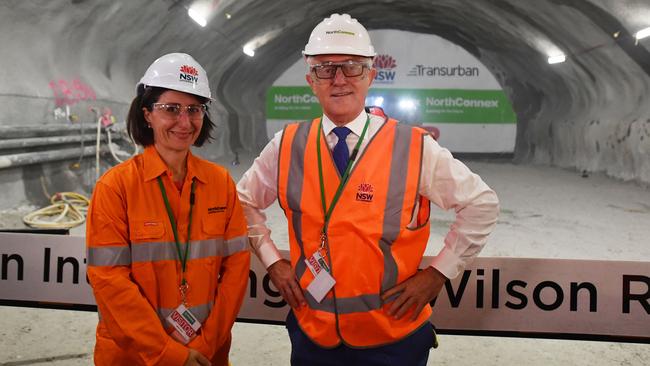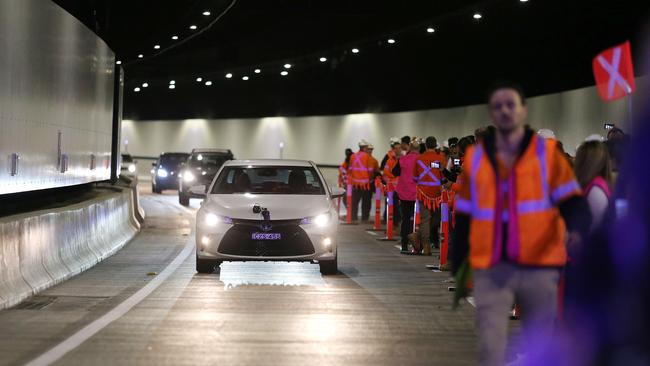‘Toll saturation’: Sydney drivers to pay $195 billion for motorways
Motorway tolls have been set to guarantee best returns for operators, with the needs of drivers in ‘the most tolled city in the world’ coming last, a review finds.

Sydney motorists are likely to fork out $195bn in road tolls over the next 37 years, paying for the cost of the motorways three times over because of overly generous financial returns guaranteed to owners and operators, an independent review has found.
The approach to setting tolls had been influenced more by the need to cover the operator’s financing costs than by the need to manage traffic on the roads and did not have “a strong regard to principles of efficiency and fairness”, according to the review, headed by former Australian Competition and Consumer Commission chair Allan Fels.
The review, co-authored by former Prices Surveillance Authority chair David Cousins, was established by the Minns government last year to examine the basis for setting motorway tolls in Sydney.
NSW Premier Chris Minns said the report laid bare the reality of privatisation, all at the expense of the people of Sydney.
“Sydney is the most tolled city in the world”, Mr Minns said. “Now we know trying to fix it requires a significant reset of the tolling network.
“The toll burden is hitting families who can least afford it most, particularly parts of western Sydney that have fewer public transport alternatives to getting in the car and paying tolls.”
However, the government has yet to provide any detail about what Roads Minister John Graham described as “a serious second look at how our toll system works”.
Government modelling released in November last year suggested Sydney motorists would pay at least $123bn in road tolls by 2060 in today’s dollars. The review authors say that, in nominal dollars, the figure is $195bn.
The WestConnex scheme alone accounts for around 52 per cent of the estimated toll figure in today’s dollars. The modelling includes revenue to privatised roads including WestConnex, NorthConnex, Eastern Distributor, M2 and M7, as well as the NSW government-owned Sydney Harbour Bridge and Tunnel, and the future M6 Stage 1.

Sydney is the most congested capital city in Australia, with more toll roads than any other capital city in Australia, the report says.
Analysis conducted by the review shows toll roads are much less congested than untolled roads because the great majority of motorists believe tolls are too high and continue to use busier untolled roads. Some 87 per cent of respondents to a poll by the review thought tolls were too high and a similar proportion believed the financial burden of tolls had increased over time.
“There are numerous concerns about the structure and level of tolls,” the authors report.
The problems stem from the way tolls had been set under individual concession agreements at different times over the past three decades. Since tolls were set administratively, rather than by competitive market forces, there is a real likelihood that they were not always set appropriately, the review says.
The agreements set the tolls for the life of the concession, meaning changes in demand or technology can’t be readily corrected. Tolls rise with inflation but “floor” provisions mean the toll price doesn’t decrease even if the consumer price index does, the review notes.
Most of the concession agreements date from the 1990s and 2000s, and their built-in rates of return reflect the higher costs of capital then, the review finds.
“These rates can be regarded as generous compared to rates which would be considered should apply today,” it says, adding there is also no requirement for efficiency benefits to be shared with users in the form of lower tolls.







To join the conversation, please log in. Don't have an account? Register
Join the conversation, you are commenting as Logout